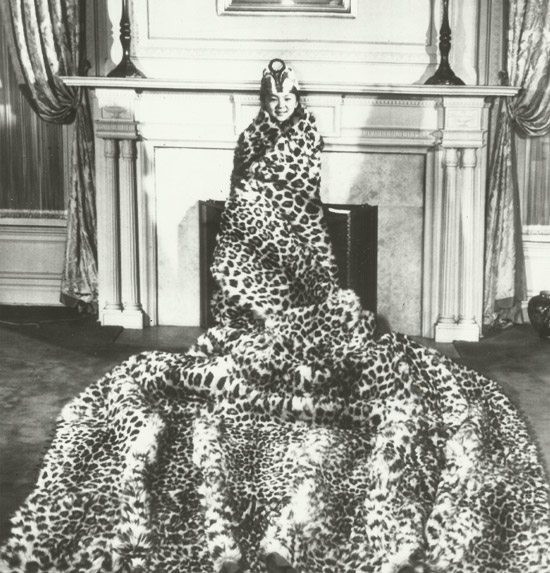Words by Robert Neff
Perhaps the most famous of these gifts was the legendary Queen Min’s Carpet.
While wandering through the ruined streets of Seoul in April 1951, 27-year-old Sergeant Elverne H. Giltner, a communications chief for an Eighth Army reconnaissance company, encountered a Korean selling what he claimed were valuable antiques from his cart. One item, a huge carpet – nearly eighteen and a half feet long and about eight feet wide – made from the matched pelts of 48 leopards immediately caught Giltner’s attention. Although he didn’t explain how he had come by the carpet, the Korean peddler claimed “it was worth at least $25,000 and came from the Chang Duk palace in Seoul.” He was willing to sell it for a mere 150,000 Korean won – worth about $25 USD. Giltner promptly bought it and in a letter to his parents wrote that he was sending them “a pretty nice Korean rug” that he had picked up.

For nearly three months Giltner lugged the carpet around before “receiving ‘official’ clearance papers” declaring the carpet “spoils of war.” He then packed the carpet in a torn duffel bag and shipped it to his parents in Pueblo, Colorado.
When Mrs. Giltner received the carpet she was overwhelmed by its size and beauty. It was far too large for her living room or any place else in her house. “It looks just like a leopard – a beautiful thing to behold,” she declared and then concluded that it was “too fine for me to walk on” and that “it really belongs in a museum or really big house.”
Unable to make use of the carpet, she was determined to sell it. While displaying it in her yard – “the best place to get a good view of it” – several of her neighbors offered to buy it but none of their prices were close to what she thought it was worth so she sent it to Richard R. Simmons, a fur dealer, for cleaning and storage. Simmons, recognizing the value of the item, showed it to the press.
The Korean consul general in New York, David Nam-koong, noticed the picture of the carpet in a newspaper and thought it was a “very odd” souvenir for a solder to send home. He was convinced that it was an ornament that once hung in Queen Min’s palace prior to her assassination in 1895 and that it was worth about $100,000, “if such a priceless national treasure can have a price tag.”
The Korean government demanded that the carpet be returned, which the Giltner family agreed to do providing it could be proven that the carpet was a valuable heirloom. Apparently the proof was provided.
It is unclear what compensation, if any, the Korean government provided but in September 1951 Hanora’s Fabric, a New York manufacturing company specializing in synthetic leopard skin, offered to provide the Giltner family with an exact replica of the carpet for free.
The carpet was returned to Korea sometime in 1952 but somehow ended up disappearing. In 2010, the Cultural Heritage Administration, a Korean organization attempting to recover lost Korean treasures, demanded that the Korean government account for the valuable carpet. The National Museum responded by revealing what it claims is the legendary Queen Min’s carpet.
But in an interview with Korea Herald in May 2010 Lim Jae-wan, a museum official, explained that there was some question as to the claim that the carpet was owned by Queen Min. The plum flower pattern, which is on the back of the carpet, was not used in the palace until after 1897 – two years after Queen
Min’s death.
But is it the same carpet? The carpet the museum possesses is about 3 cms shorter than Giltner’s carpet allegedly was. Perhaps this is explained by Lim, who noted that there is “the possibility that there was more than one carpet of this kind in the palace.”




